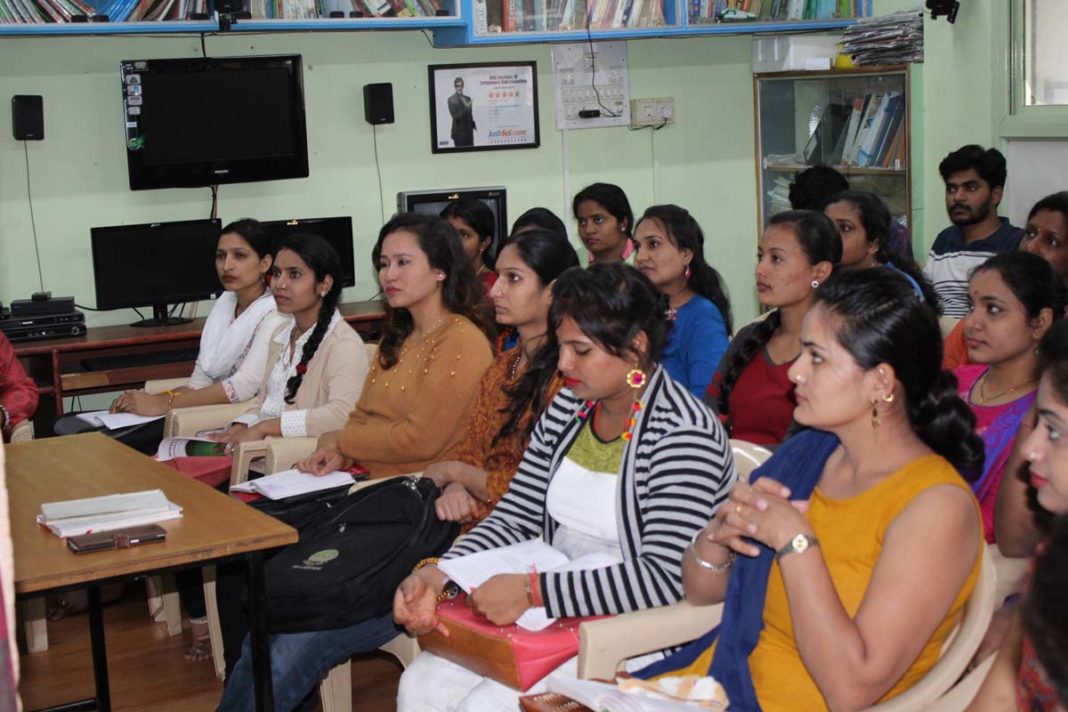India is a modern nation and an ancient civilization whose history lies wrapped in the mists of time. The mighty Himalayas crown this vast country while waters of The Arabian Sea, Bay of Bengal and the Indian Ocean wash its feet.The country has been a seat of great empires and numerous kingdoms. In its lap, it welcomed and cradled a large number of people who professed different religions and belonged to different nationalities and ethnicities. All these people with different languages and dialects gave rise to huge diversities and this resulted in India becoming a melting pot of races, cultures, religions, beliefs and languages. Though the Indians wrote in a large number of languages and spoke in many more, communication was always smooth. Two of the world’s largest language families, the Indo-Aryan and the Dravidian, hold sway over much of India. Thus, it was inevitable that a number of common linguistic features were spread in different Indian languages and not one language became particularly dominant.
Today, the country with approximately 1.38 billion people and around 19,000 languages spoken as mother tongue, can lay claim to be the most multilingual nation of the world. According to the Registrar General and Census Commissioner, India, as of 2018, a total of 121 languages were spoken by more than 10,000 people each.The Eighth Schedule of the Constitution of India recognizes 22 languages as scheduled and the speakers of these languages cover around 96% of the country’s population. These languages have the coveted official status and encouragement.

When India broke the shackles of British imperialism in 1947, Hindi was chosen as the official language by its new leaders as they hoped that it would facilitate intra-region communication, besides promoting and encouraging national unity. Acutely aware of the inherent pitfalls of installing a single language in the multilingual environment of the country, they planned for and so, prepared a clear timeline for phasing English out within 15 years,and promoting and encouraging Hindi straightaway. But due to the international eminence of English, it conferred numerous advantages on people who could converse in it. As a result, the demand for an English education soared. Hindi received a serious setback in regions, especially south and east India, where local population felt little or no need for it. This made sure that the educated people who worked in the government or were desirous of government jobs, had to have a working knowledge of English. And so, English could not be phased out as planned, and in spite of this careful planning and various misconceptions floating around, the Indian Constitution has not given the status of the national language of India to Hindi. Rather, it is the official language of the Union, along with extant English.
Later in 1963, with the framing of The Official Languages Act, English was allowed to continue alongside Hindi as one of the two official languages of India.
Before Independence
Though Indus Valley Civilization surely had a language as is evident from its seals, Vedic Sanskrit is the oldest Indo-Aryan language with its origin attested back to around 1,500 B.C. Because of this fact, it finds a place among the oldest languages extant in the world in the present times. Around 400 B.C., Panini, the great grammarian, and other literary scholars developed a literary language out of various Vedic dialects and called it Sanskrit. It stands for “pure” or “refined” and is presently called Classical Sanskrit. Almost all the major languages of north India have originated from Sanskrit. As Vedic religion spread down south with the invading Aryans, Sanskrit went along and influenced Dravidian languages as these languages borrowed extensively from it. Due to this fact, majority of people in north and south India accord high regard to Sanskrit, which now has a pan-Indian character.
As Muslim invaders poured into India, Turkic-Afghan dynasties like the Ghaznavids brought in Persian as the court language. Later, the Mughals too adopted Persian and as a result, the language came to influence and dominate literature, history and art of north India.As the British began to run amok across India’s terrain, they became the dominant political and military power in the country. And so, they began using English and Hindustani, in place of Persian, for administration. Later, most functions of the government came to be performed in English only. All this while, Hindi and Urdu also developed as the languages of communication. Hindi, written in Devnagri script, has a Sanskritized vocabulary while Urdu is written in Arabic script and has a Persianized vocabulary. Both can be said to be different variants of the same spoken language.
From the 1920s onwards, Mahatma Gandhi became the absolute leader of India’s freedom movement. He wanted Hindustani as the national language but after India was partitioned and millions of Indian Muslims emigrated to their new homeland, the protagonists of Hindi rallied against Hindustani, as for them, it was an Urdu mask that had to be cast away. They further viewed it as a symbol of Muslim appeasement.
After Independence
One of the earliest decisions of the Constituent Assembly was that its proceedings would be held in Hindustani and English. From the beginning, Hindi was the clear choice. Among all the Indian languages, it had the most speakers. Since it had a strong influence of Sanskrit, just as Dravidian languages, it would be acceptable to south Indians as well. Indian leaders were of the view that Hindi as the national language would help to unite various regions of India. Most of the proponents of Hindi as the national language were deeply entrenched in the politics of Hindi heartland who refused to understand the concerns of the regions where Hindi was not used as much. The concerns of opponents of Hindi were that imposing a language that was not theirs, would adversely affect the people regarding their education, job prospects, public services etc. Some members from south India favoured Hindustani while some other wanted Sanskrit.
At this point, when no final decision appeared in sight, the Munshi–Ayyangar formula, an earlier tabled proposal, was accepted as a compromise. It proposed that the “official language of the Union” would be Hindi with Devnagri script and English to be used for all official work for 15 years from the date of framing of the Constitution. The Parliament was given the power to extend the term, if and when it so wished. Prime Minister Nehru assured that Hindi would never be imposed in non-Hindi regions.
After independence, various provinces were carved up into states on linguistic lines. In 1967, the Official Language Act of 1963 was amended which declared Hindi and English as the two official languages of the country.
The Indian government undertook a number of actions to help in the spread of Hindi. As English was to be phased out in 15 years, many associations were formed and funded to promote Hindi in regions where it was the minority language. Writers, editors, translators and poets of various hues and shades were funded to produce their works in Hindi. The government formed committees to expand Hindi’s vocabulary so that it could perform its official functions. But as the new words were primarily from Sanskrit, they were unfamiliar to the average Indians, they were not put to use. In their place, people began to use English words or their variants. This way, the growth of Hindi was stopped in its tracks by English but it can never be India’s national language as it is a symbol of colonialism and slavery.
Besides, people, initially in south India and later in other non-Hindi regions, began to raise concerns about imposition of Hindi. According to them, their languages had equally proud literary traditions and so, they could not understand as to why Hindi should be provided a dominance.Due to all these factors, the planned phasing out of English and the elevation of Hindi as the national language did not happen.
In 1965, as per the 15-year plan, the government instructed for any further communication between the Center and the states to be in Hindi. The non-Hindi states were to receive an English translation of the said communication. This led to protests in a number of states and Madras was engulfed in anti-Hindi riots. Sixty-six people died of which some committed self-immolation.
The main grievance of the protestors was that the usage of Hindi in government services would be to their disadvantageas they had to learn it for gaining employment in the said services. They also felt it unfair that while people living in Hindi speaking regions would have to learn only English, they had to learn both Hindi and English.
In order to end the protests and as a compromise, the government came out with National Education Policy in 1968 which had the Three Language Formula. As per this formula, Hindi, English and a modern Indian language were to be taught in Hindi speaking states while for non-Hindi speaking states, it was to be Hindi, English and an Indian language. This way, the government sought to affirm national unity, increase administrative efficiency and accommodate group identity. The formula came about as teaching systems across the country were not uniform.
But people in authority were not serious in implementing the formula so it did not become a grand success that it was supposed to be. Powers that be in Hindi speaking states did little to implement this formula whereas the anti-Hindi government of Tamil Nadu cited this lack of implementation in northern states and rejected the formula altogether. Thus, this fine theory with a faulty implementation, did not succeed in the country as a whole but has worked well in certain regions.
Later, this whole language issue got mired in different issues like nationalism, sub-nationalism, culture and vote bank. As is their wont, politicians all over the world can easily manipulate uneducated people and it holds true for our politicians as well. In the late 1960’s, a prominent political party of Tamil Nadu allegedly gained mass support by latching on to the language issue exploiting public emotions.
In the mid-1990s,the same party declared that “Tamil is the natural expression of Tamil nationalism, and the Central Government should declare it an official language on par with Hindi and English, to protect the identity and individuality of the language” while one of its ministers said that “the State Government would stand by the two-language formula of having only Tamil and English and would defeat all efforts to impose Hindi in any form”.
The Present Situation
As per the Census 2011, Hindi, at 44%, is the most spoken language in India. Most of the population of north and central India cite Hindi as their mother tongue and its speakers make up significant urban pockets in nearly all metro cities and most states.
Despite all the controversies surrounding it, Hindi leapfrogged by a mind-boggling 161% between 1971 and 2011. In comparison, Dravidian languages grew by mere 81%. The reasons for this are many: high growth of population in Hindi speaking states, growing migration for employment by Hindi speakers to non-Hindi speaking states of the country and the influence of Bollywood or Hindi film industry.
Thus, soft power succeeded where hard power failed. When Hindi was sought to be implemented by the central government through official orders, people in non-Hindi states resisted it with all their might. But when Hindi was conveyed to them seductively through television, satellite channels and cinema, it has gone straight to their heart.
The Reignition
The issue was reignited in 2019, when on the occasion of Hindi Divas, Union Home Minister Amit Shah wrote on Twitter, “India is a country of different languages and every language has its own importance but it is very important to have a language of the whole country which should become the identity of India globally”. He further said that in the present times, Hindi is doing the work of uniting the country,thereby pitching the notion of ‘one nation, one language’. As was expected, these comments triggered a political firestorm. Shah hurriedly issued a clarification by saying that it was only a “request” and asked the Opposition to desist from politicizing the issue. The opposition to the Home Minister’s comments was, as usual, more vehement in the South Indian states.
In 2020, Indian government brought out The New Education Policy. As per the policy, mother tongue or regional language would be the medium of instruction for children of classes up to V. It further stated that the three-language policy be continued in schools; with students in Hindi speaking states will learn Hindi, English and a third Indian language while students in non-Hindi speaking states will learn their regional language besides Hindi and English.
According to its critics, the policy seems to provide more importance to Hindi as compared to other Indian languages. Besides causing political ripples, the issue caused mass protests in southern states, with people resorting to removal of Hindi signs,blackening Hindi signboards and milestones, and the usual stone-throwing etc.
Now, it seems as the issue has gone beyond languages and has become more of a real or imaginary tussle between Aryans and Dravidians, the alleged North Indian hegemony and an imposition of mono-culture.
To Conclude
For the past 70 odd years, India has had two official languages and many regional languages. So far the country and its states have managed their affairs smoothly barring minor glitches. So it seems that a national language is not the need of the hour for the country. In today’s times, when more and more Indians are criss-crossing the country, taking up jobs and appreciating its various sights, a national language would be of immense help but any one language should not be forced down someone’s throat. People should have the freedom to learn any language of their choice rather than forcing them to learn an unfamiliar language. It is now a known fact that any attempt to force Hindi will be met with fierce opposition, no matter how much one desires it. Any imposition of Hindi may affect the learning ability and hence, self-confidence of people who do not speak the language.The linguistic identities people should not be sacrificed on the altar of national integration.
People communicate in the language in which they feel comfortable and confident. It also affects their thought process and defines their personality. If they are not comfortable in the language they are communicating in, it would lessen their confidence, interrupt their though process and so, lessen their personality.
The government must not decide on the language to be used by the people. In the present times, economics or rather, the market, drives people to learn a language in a very non-invasive way, as happened with English in India. The knowledge of English aided India’s economic rise and the success of Indians all over the world as it is a major advantage in the world of business. Today, English is spoken by barely 2% of the Indian population, it translates into a huge number as we are a country of nearly 1.4% billion people. As of today, the English speaking minority is the most influential and elite in the country.
A large number of people, including eminent educationists, sociologists and political commentators support the Three Language Formula. The government must be pragmatic, listen to all stake holders, take its time and come out with a rational and realistic policy for national language. Presently, no one sided solution would please all and would be met with fierce opposition and furore as people have unrealistic attitudes with the issue and it is fraught with sentimental tones.
Also Read:




















A very informative article. Congratulations to respected author.👌👌👌👍👍👍👍
Thanks for the great article and great information.
Very thoughtful and straight forward.. With due regards to Hindi language, we shld not forget that English is the language that helps our kids in long run as far as career prospects are concerned. Which parent won’t like a good career for his/her kids. By promoting & pushing Hindi, these so called Leaders are encouraging parents to teach Hindi to your kids, majority of whom will eventually end up as clerks & pick up 3rd grade jobs or become pizza/burger delivery boys in McDonalds or Fast Food chains like KFC etc .. While the sons & daughters of these very leaders will concentrate on evolving themselves, go to English medium
convent schools with high fees, or go abroad for studies & become the English speaking elites & become the ultimate Rulers in India or, if not able to become Netas, take away our billions of tax payers money & fly off to Foreign countries with their families..with friends in govts either aiding in their flights or fooling the public to get them back at times of Elections & spend another millions on advertising it to get votes.
Media won’t ever cross check, while public keeps getting fooled and keep jeopardising the future careers of their very own children.. Sad and unfortunate as Media hand in gloves with politicians & Govt
Very well said and written. Salute our mother tongue. Go India 🇮🇳 🇮🇳 Jai Hind.
A well researched and well written article. I look forward to reading your next informative article. Thank you
Well said! With 19,000 languages spoken as mother tongue, we can certainly lay claim to be the most multilingual nation of the world.. India is unique in its diversity
Gr8.. The article has a higher bar & is quite logical..
Some very useful information here. Thanks.
Great read. Informative with smooth narrative.